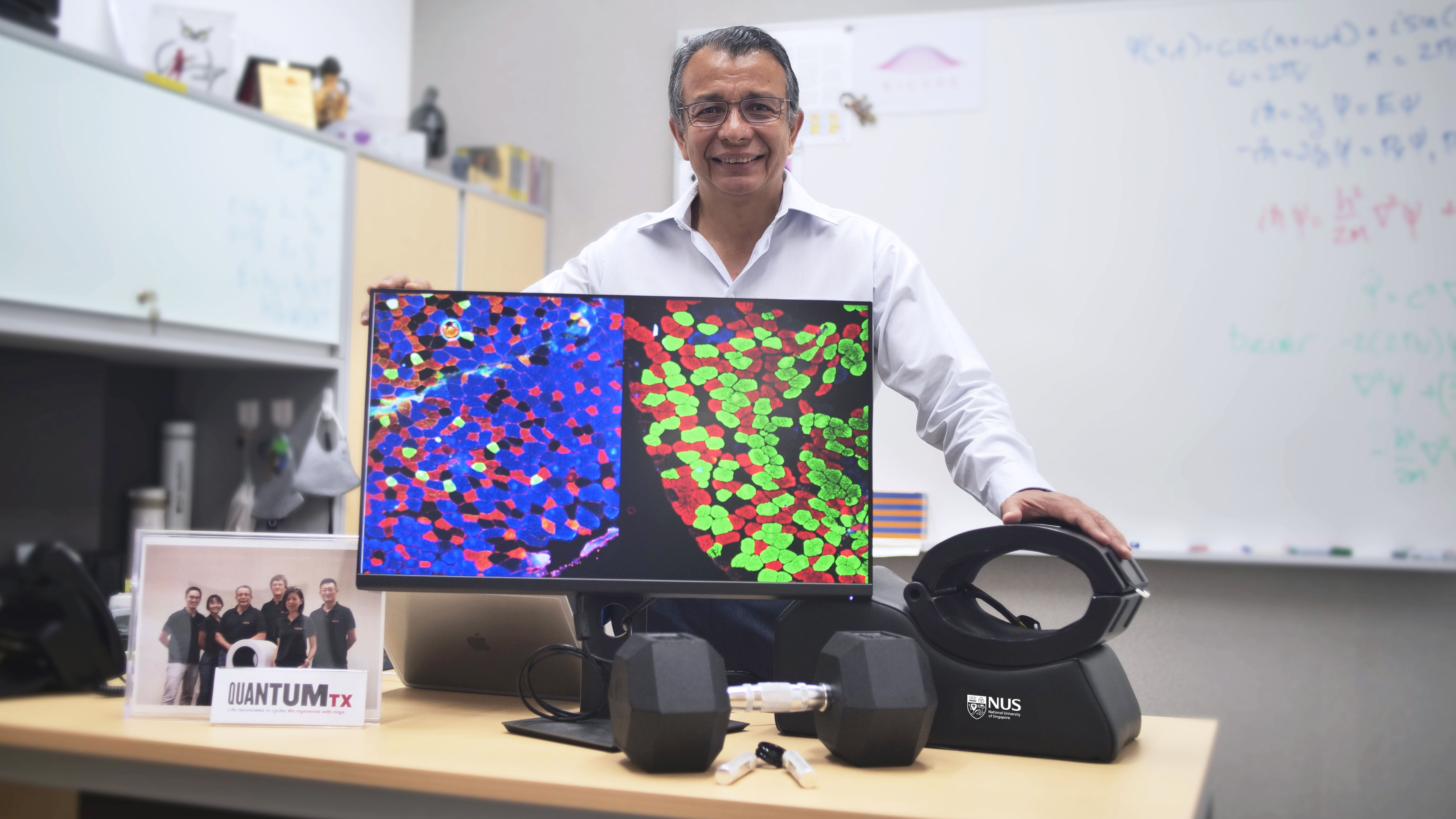Alcohol researchers have long known that excessive drinking can cause damage to the liver, pancreas, heart, muscle, bone, and brain. However, only a subset of patients with alcohol use disorder (AUD) appear to develop organ damage. New research shows that alcohol-induced gut inflammation is the missing link between unhealthy drinking and organ damage among certain AUD patients.
Tag: Muscle
Synchronisation between the central circadian clock and the circadian clocks of tissues preserves their functioning and prevents ageing
• Two complementary research articles, published simultaneously in the journals Science and Cell Stem Cell by a team of scientists from the UPF and IRB Barcelona, reveal that central and peripheral circadian clocks coordinate to regulate the daily activity of skin and muscles.
• The coordination between the two clocks (central and peripheral) guarantees 50% of the circadian functions of tissues, including vital processes such as the cell cycle, DNA repair, mitochondrial activity, and metabolism.
• Synchronisation between the central brain clock and peripheral ones prevents premature muscle ageing and improves muscle function, suggesting new strategies to tackle age-related decline through circadian rhythm modulation.
Some Benefits of Exercise Stem from the Immune System
Research in mice shows that the anti-inflammatory properties of exercise may arise from immune cells mobilized to counter exercise-induced inflammation. Immune cells prevent muscle damage by lowering levels of interferon, a key driver of chronic inflammation, inflammatory diseases, and aging.
Transplanting Muscle Mitochondria among Species May Create Opportunity for New Treatments
Article title: Muscle mitochondrial transplantation can rescue and maintain cellular homeostasis Authors: Debasmita Bhattacharya, Mikhaela B. Slavin, David A. Hood From the authors: “Our study illustrates the feasibility of using mouse skeletal muscle-derived mitochondria for transplantation in intraspecies- and interspecies-specific…
New Exercise Technique Improves Muscle Responsiveness in Aging Mice
Rockville, Md. (June 1, 2022)—Combined modality exercise such as aerobic and resistance exercise is highly beneficial for an aging population, according to a new mouse study published ahead of print in the journal Function. Researchers also discovered the calf muscle…
Radiofrequency heating plus electromagnetic stimulation reduces belly fat and increases muscle
The combination of radiofrequency (RF) heating and high-intensity focused electromagnetic (HIFEM) energy provides a single, noninvasive procedure for abdominal body shaping – simultaneously reducing belly fat while increasing abdominal muscle mass without surgery, reports a study in the May issue of Plastic and Reconstructive Surgery®, the official medical journal of the American Society of Plastic Surgeons (ASPS).
Piezo1 Possible Key to Supporting Muscle Regeneration in Duchenne Muscular Dystrophy
Tracing the impact of a single protein, Piezo1, Penn researchers found that restoring it in muscles affected by Duchenne muscular dystrophy could improve their ability to heal efficiently
Wash-and-wear sensors
University of Utah chemical engineering assistant professor Huanan Zhang has developed a process that turns clothing fabric into biosensors which measure a muscle’s electrical activity as it is worn. This could become a much better solution in measuring muscle activity for physical rehabilitation or for other medical applications.
Tracking Muscle Activity with Clothes on Your Back
In APL Materials, researchers have developed a bioelectrical sensor that is convenient and low-cost. The sensor measures electromyography signals that are generated in muscles when they contract and are useful for studying muscle fatigue and recovery, and they have the potential to inform diagnosis and treatment of neuromuscular diseases. The biosensor, made of silver paste with a layer of gold nanoparticles on top, is directly integrated onto a piece of clothing. The result was a detector that was both conductive and nonirritating to the skin.
Orangutan Finding Highlights Need to Protect Habitat
Wild orangutans are known for their ability to survive food shortages, but scientists have made a surprising finding that highlights the need to protect the habitat of these critically endangered primates, which face rapid habitat destruction and threats linked to climate change. Scientists found that the muscle mass of orangutans on the island of Borneo in Southeast Asia was significantly lower when less fruit was available. That’s remarkable because orangutans are thought to be especially good at storing and using fat for energy, according a Rutgers-led study in the journal Scientific Reports.

NUS-led team uncovers molecule that promotes muscle health when magnetised
A research team led by Associate Professor Alfredo Franco-Obregón from the National University of Singapore’s Institute for Health Innovation and Technology has shown how a molecule found in muscles responds to weak magnetic fields. This responsiveness could be used to stimulate muscle recovery.
Severe Obesity in Type 2 Diabetes Causes Impaired Glucose Metabolism in Muscle Cells
Article title: Impaired glucose partitioning in primary myotubes from severely obese women with type 2 diabetes Authors: Kai Zou, Kristen Turner, Donghai Zheng, J. Matthew Hinkley, Benjamin A. Kugler, Pamela J. Hornby, James M. Lenhard, Terry E. Jones, Walter J. Pories,…
Brace yourself: Novel experiment isolates genes that cause some people to gain muscle while others don’t
Researchers studying the mystery of why some weightlifters’ muscles grow much more quickly than others’ have found new answers through a novel experiment in which subjects worked out one leg and immobilized the other.